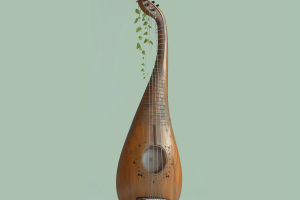Conga drums, an iconic element of Latin music, are as rich in history as they are in rhythm. Their deep, resonant tones and cultural significance make them an irreplaceable instrument in many musical genres worldwide.
Understanding the conga’s origins and evolution not only enriches our appreciation but also inspires aspiring musicians to delve deeper into its rhythmic legacy.
1. What are Conga Drums?
Structure and Design
Conga drums, also known as tumbadoras in Cuba, are narrow, single-head drums varying in height and diameter. Traditionally, these drums were crafted from wooden olive barrels, a testament to their African heritage. Today, modern congas are often made from staved wood or fiberglass, depending on the manufacturer and intended use.
Drum Heads
The first conga drum heads were made from cow or mule hide, tacked onto the shell. This technique mirrored African drum-making traditions. In modern times, drum heads use materials like cowhide, water buffalo skin, steer skin, or even synthetic alternatives, offering versatility and durability to meet the demands of contemporary players.
Sets of Congas
Conga drums are typically played in sets of one, two, or more. The combination of different sizes allows for a wide range of pitches and tones, making the instrument highly dynamic and versatile in various musical settings.
2. The Origins of Conga Drums
Afro-Cuban Roots
Dear Lykkers, the origins of conga drums can be traced back to Cuba, heavily influenced by the cultural traditions brought by enslaved people from the Congo region of Africa during the 17th and 18th centuries. These enslaved individuals carried with them rich musical traditions, which melded with local Cuban culture over time.
The Makúta and Lucumí Bembé Drums
The conga drum’s closest ancestor is the makúta drum, a tall, barrel-shaped instrument used in private spiritual ceremonies of Bantu origin. Another notable predecessor is the Lucumí bembé drum, slightly smaller in size but bearing a striking resemblance to the conga in both structure and sound.
The Rumba Revolution
By the late 19th century, when slavery was abolished in Cuba, an explosion of cultural development took place. Genres like rumba began to flourish, incorporating conga drums as a central element. Rumba, originating from urban neighborhoods in Havana and Matanzas, was the first genre to officially adopt the conga drum into its standard instrumentation.
3. Evolution of the Conga Drum
From Traditional to Modern Tuning
Initially, conga drums were non-mechanically tuned, with drum heads secured using tacks or nails. Players adjusted the pitch by moistening or heating the drum head—moistening lowered the pitch, while heating raised it. However, this process was cumbersome and limited the precision of tuning.
The Mechanical Tuning Revolution
In the 1950s, the introduction of a mechanical tuning system revolutionized conga drums. This innovation included a securable rim, lugs, and adjustable lug nuts, allowing players to tune their drums with greater precision. This breakthrough not only enhanced the melodic possibilities of the instrument but also made it more accessible to contemporary musicians.
4. The Conga’s Global Impact
Integration into Jazz and Salsa
The conga drum’s versatility saw it seamlessly integrated into American jazz ensembles during the 1930s and 1940s. Its rhythmic depth added a unique layer to jazz compositions. Later, the drum played a pivotal role in the development of salsa music in the early 1960s, a genre born from Cuban rhythms and styles like Son.
Expanding Beyond Latin Music
Today, conga drums have transcended their Afro-Cuban roots and are widely used in various genres, including rock, pop, and world music. Their adaptability has made them a beloved instrument for musicians across the globe.
5. The Art of Playing Conga Drums
Mastering Latin Rhythms
To play the conga drums effectively, one must learn the fundamental rhythms of Latin music. Conga players, known as conguero (male) or conguera (female), use their hands to produce distinct tones by striking different areas of the drumhead.
Dynamic Techniques
Modern conga players employ a variety of techniques, such as open tones, slaps, and muted hits, to create complex rhythms. With mechanical tuning systems, players can also fine-tune their drums to specific pitches, enabling melodic playstyles that were previously unattainable.
Conga drums are much more than percussion instruments; they are a symbol of cultural fusion, musical evolution, and rhythmic excellence. From their Afro-Cuban origins to their global prominence, the conga drum continues to inspire musicians and audiences alike. Whether you’re a beginner eager to learn or a seasoned player exploring new rhythms, the conga drum offers an endless world of musical possibilities.


